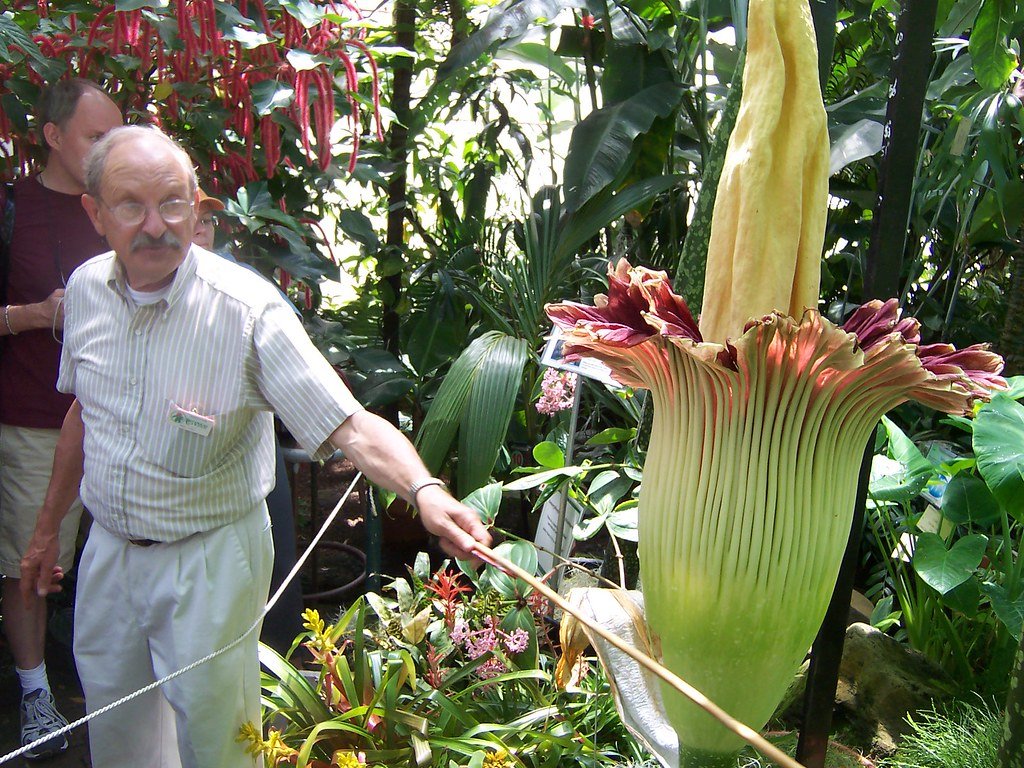Picture this: an ant suddenly abandons its colony, climbs to a precise height on a plant stem, clamps down with its mandibles, and dies. Within days, a fungal stalk erupts from its head, raining spores down on unsuspecting ants below. This isn’t science fiction—it’s happening right now in forests around the world, and it’s far more sophisticated than any horror movie plot.
The Zombie Ant Phenomenon Explained

The Ophiocordyceps unilateralis fungus has perfected the art of mind control over millions of years. When spores land on an ant’s exoskeleton, they penetrate the body and begin their sinister work. The fungus doesn’t just kill its host—it reprograms the ant’s behavior entirely, turning it into a walking corpse with a single mission.
Scientists have documented this phenomenon across multiple continents, with different species of Ophiocordyceps targeting specific ant species. The precision is remarkable: each fungus has evolved to manipulate its particular host species with surgical accuracy. What makes this even more chilling is that the ant remains conscious throughout much of the process, unable to control its own actions.
How the Fungus Infiltrates Its Victim
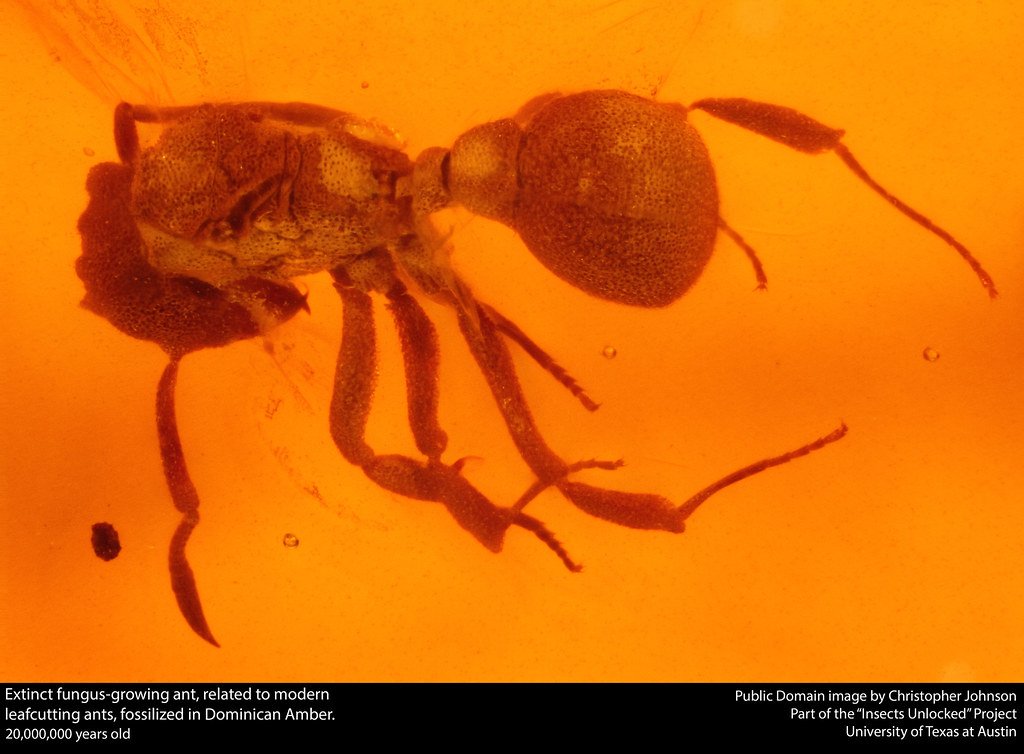
The invasion begins when microscopic spores attach to an ant’s outer shell. These spores are incredibly resilient, capable of surviving harsh environmental conditions while waiting for the perfect host. Once contact is made, the fungus releases enzymes that literally eat through the ant’s protective exoskeleton.
Within hours, fungal cells begin multiplying inside the ant’s body cavity. The organism spreads methodically, avoiding vital organs initially to keep the host alive and mobile. This calculated approach ensures the ant can continue functioning while the fungus establishes its dominance over the creature’s nervous system.
The Terrifying Process of Brain Hijacking

Here’s where things get truly disturbing: the fungus doesn’t actually invade the ant’s brain directly. Instead, it forms a network of fungal cells throughout the ant’s body, creating what scientists call a “fungal nervous system.” This network communicates with the ant’s actual nervous system, effectively creating a biological override mechanism.
The fungus releases chemical compounds that interfere with neurotransmitters in the ant’s brain. These chemicals essentially hijack the ant’s decision-making processes, forcing it to act according to the fungus’s agenda rather than its own survival instincts. The ant becomes a biological robot, controlled by its parasitic passenger.
The Death Grip That Ensures Survival

The most crucial moment in this macabre dance is the “death grip.” The infected ant climbs to a specific height—usually about 25 centimeters above the ground—and selects a leaf or stem with particular characteristics. The fungus has somehow calculated the optimal position for spore dispersal, factoring in humidity, temperature, and wind patterns.
The ant then clamps its mandibles around the plant material with extraordinary force. This bite is so powerful that researchers often find ant skulls still attached to vegetation long after the rest of the body has decomposed. The fungus literally locks the ant’s jaw muscles in place, ensuring the host dies in the perfect position for the next phase of the fungal lifecycle.
From Death to Spore Factory
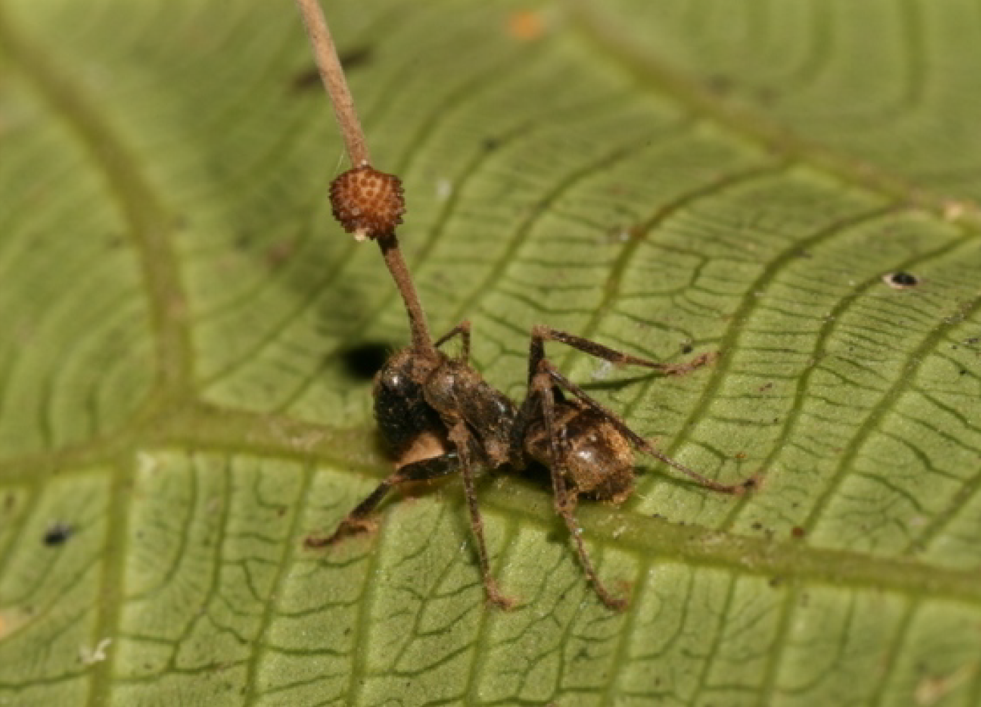
Once the ant is secured in its final position, the fungus begins consuming its host from the inside out. The process is methodical and efficient—the fungus has evolved to extract maximum nutrition from its victim while preserving the structural integrity needed for spore production. Within a few days, fungal tissue begins breaking through the ant’s exoskeleton.
The most dramatic moment comes when the fungal stalk, called a stroma, erupts from the ant’s head. This grotesque structure can grow several times the length of the ant’s body and serves as a spore-launching platform. The timing is critical—the fungus must release its spores when conditions are optimal for infecting new hosts.
The Science Behind Spore Dispersal
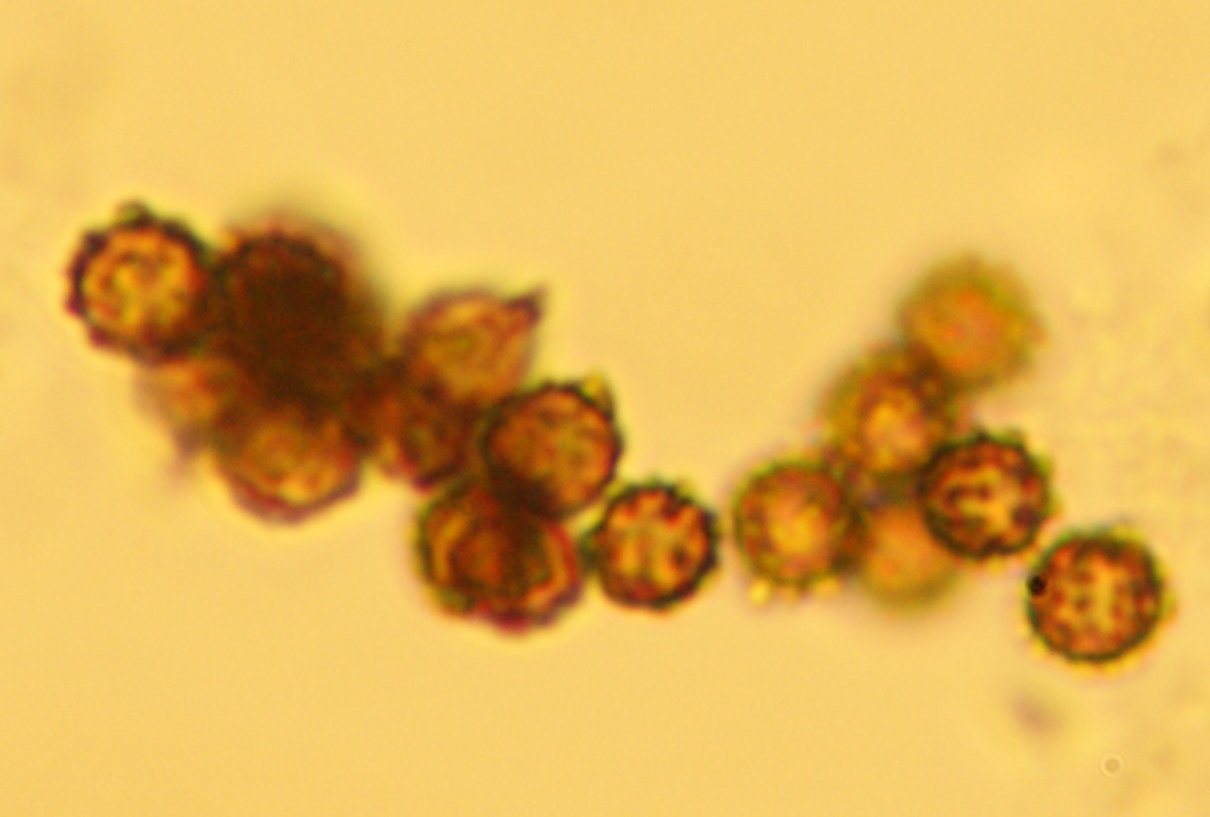
The fungal stalk acts like a biological artillery system, designed to maximize the spread of infectious spores. Research has shown that these structures can shoot spores over remarkable distances, with some capable of launching them several meters away. The fungus has even evolved to time spore release with environmental conditions that favor infection.
Each spore release can contain millions of infectious particles, creating a microscopic rain of death for any ants unfortunate enough to be in the vicinity. The spores are incredibly hardy and can remain viable in the environment for extended periods, waiting for the perfect host to come along. This passive dispersal strategy ensures the fungus can infect new victims even when host populations are scattered.
Global Distribution and Species Diversity
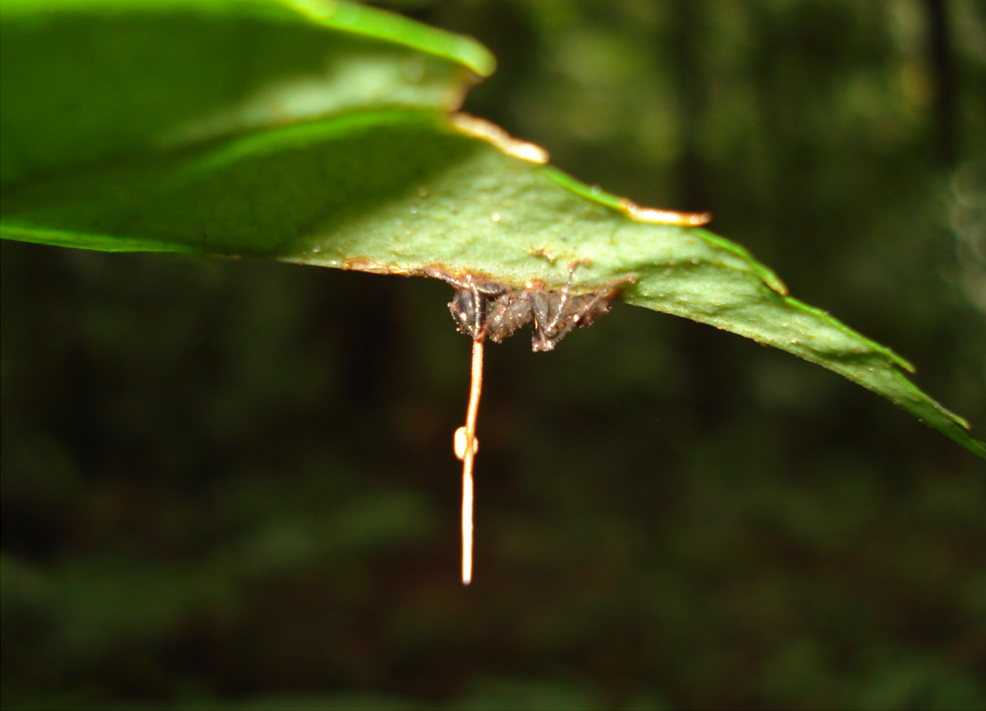
Ophiocordyceps fungi exist on every continent except Antarctica, with over 400 documented species. Each species has typically co-evolved with specific ant species, creating intricate predator-prey relationships that have developed over millions of years. The diversity is staggering—some fungi target carpenter ants, others prefer leafcutter ants, and still others specialize in different ant species entirely.
Tropical rainforests harbor the greatest diversity of these fungi, where warm, humid conditions provide ideal environments for both fungal growth and ant populations. However, researchers have also documented zombie ant fungi in temperate forests, grasslands, and even urban environments. The adaptability of these organisms is both impressive and slightly terrifying.
Evolutionary Arms Race
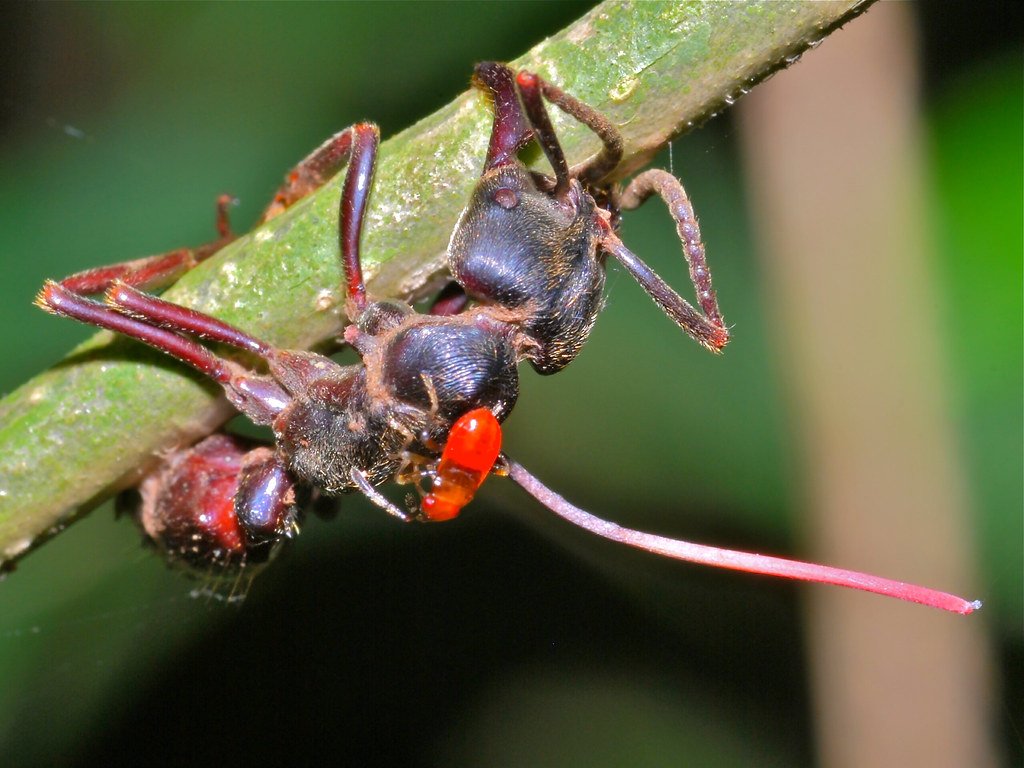
This isn’t a one-sided battle—ants have evolved numerous defenses against fungal infection. Some species have developed sophisticated grooming behaviors, where healthy ants will literally carry infected individuals away from the colony to prevent spore dispersal. Others have evolved chemical defenses, producing antifungal compounds that can kill or inhibit fungal growth.
The evolutionary pressure has created an ongoing arms race between fungi and ants. As ants develop new defenses, fungi evolve new methods of infection and control. This biological warfare has been raging for millions of years, with neither side gaining a permanent advantage. The result is an incredibly complex ecosystem where both organisms continue to evolve increasingly sophisticated strategies.
Impact on Ant Colonies and Ecosystems

The effects of zombie ant fungi extend far beyond individual victims. Entire ant colonies can be decimated by fungal outbreaks, disrupting local ecosystems in profound ways. Ants play crucial roles as decomposers, seed dispersers, and predators—when their populations crash, the ripple effects can be felt throughout the entire food web.
Some researchers have observed that fungal infections can alter ant colony behavior even before individuals become infected. The mere presence of fungal spores in the environment can cause colonies to change their foraging patterns, nesting locations, and social structures. This demonstrates how deeply these parasites have integrated into the ecological fabric of their environments.
Modern Research and Discovery Methods

Scientists studying zombie ant fungi employ cutting-edge techniques to understand these complex relationships. Advanced microscopy allows researchers to observe fungal growth in real-time, while genetic sequencing helps identify new species and understand evolutionary relationships. Some researchers use GPS tracking to follow infected ants and map their final movements.
Computer modeling has become particularly valuable in understanding spore dispersal patterns and infection dynamics. These models help predict how fungal outbreaks might spread through ant populations and how environmental changes might affect these relationships. The combination of traditional field research with modern technology is revealing new insights into these ancient biological partnerships.
Climate Change and Fungal Behavior
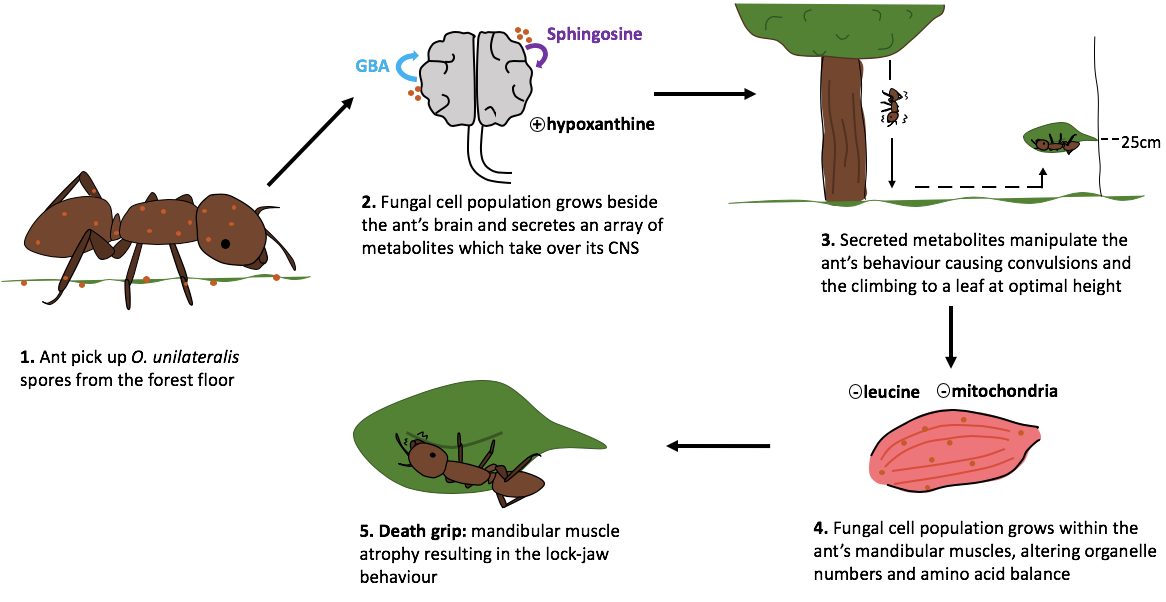
Global climate change is creating new challenges and opportunities for zombie ant fungi. Rising temperatures and changing precipitation patterns are altering the geographic ranges of both fungi and their ant hosts. Some species are expanding into new territories, while others are facing extinction as their preferred environments disappear.
Researchers have documented changes in fungal behavior that appear to be linked to climate change. Some species are altering their spore release timing, while others are showing increased virulence in response to environmental stress. These changes could have profound implications for ant populations and the ecosystems they inhabit.
Potential Medical Applications

Surprisingly, zombie ant fungi may hold keys to important medical breakthroughs. The chemical compounds these fungi use to control ant behavior are being studied for potential applications in neuroscience and medicine. Some researchers believe these compounds could lead to new treatments for neurological disorders or even new classes of antibiotics.
The precision with which these fungi target specific host species has also attracted attention from researchers developing targeted therapies. If scientists can understand how fungi achieve such specificity, it might be possible to develop treatments that target specific types of cells or pathogens with similar precision.
Conservation Implications
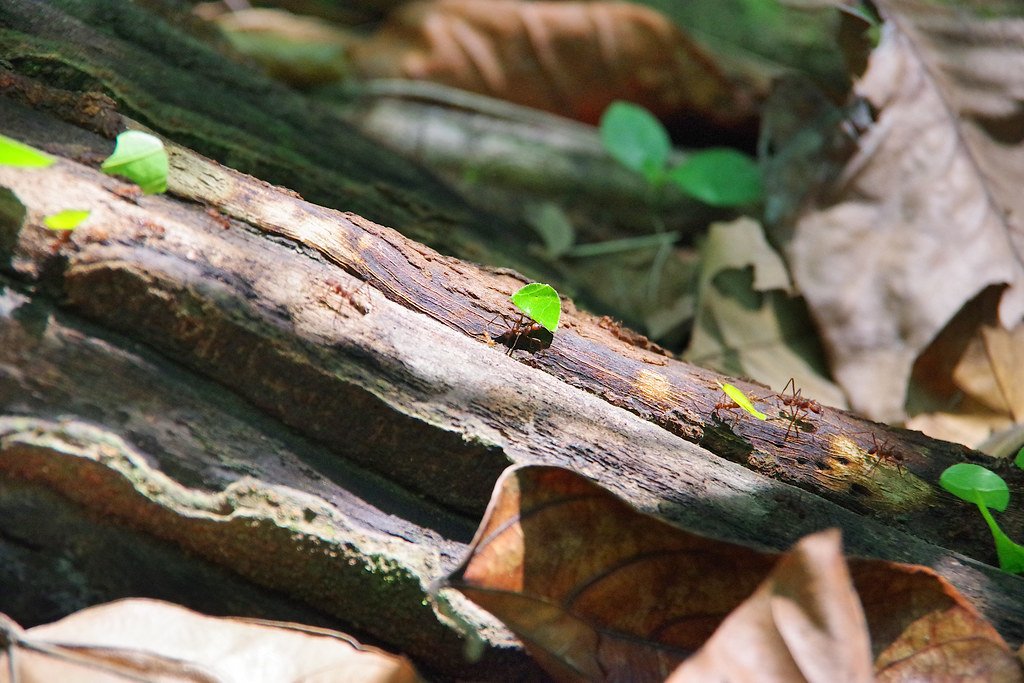
The relationship between zombie ant fungi and their hosts highlights the importance of preserving complex ecological relationships. Many of these fungal species are highly specialized and exist in delicate balance with their ant hosts. Habitat destruction and environmental changes threaten to disrupt these relationships, potentially leading to extinctions of both fungi and ants.
Conservation efforts increasingly recognize the need to protect not just individual species but entire ecological networks. The zombie ant fungi serve as a reminder that nature’s most fascinating and important relationships often involve organisms that most people never notice. Preserving these microscopic dramas may be crucial for maintaining healthy ecosystems.
Myths and Misconceptions

Popular culture has sensationalized zombie ant fungi, often portraying them as more immediately dangerous to humans than they actually are. These fungi are highly specialized parasites that have evolved specifically to target ant species—they cannot and do not infect humans or other mammals. The idea of fungal zombies spreading to humans makes for compelling fiction but has no basis in scientific reality.
Another common misconception is that infected ants are completely unconscious or dead during the mind control process. Research suggests that ants may retain some level of awareness even while being controlled by the fungus. This makes the phenomenon even more disturbing from an ethical perspective, as the victims may be trapped inside their own bodies, unable to control their actions.
Future Research Directions

Scientists are just beginning to understand the full complexity of zombie ant fungi and their ecological roles. Future research will likely focus on the molecular mechanisms of mind control, the evolutionary history of these relationships, and the potential applications of fungal compounds in medicine and biotechnology. Advanced genetic techniques may reveal new species and help scientists understand how these relationships evolved.
One particularly exciting area of research involves studying how these fungi might be used as biological control agents for pest ant species. If scientists can understand how to manipulate fungal specificity, it might be possible to develop targeted biological pesticides that could control invasive ant populations without harming beneficial species.
The study of zombie ant fungi represents one of the most fascinating intersections of biology, ecology, and evolution. These microscopic puppet masters have perfected the art of mind control over millions of years, creating some of the most sophisticated parasite-host relationships in the natural world. Far from being mere horror movie material, these fungi play crucial roles in maintaining ecological balance and may hold keys to important medical and scientific breakthroughs.
As we continue to explore these dark corners of the natural world, we’re reminded that reality often surpasses fiction in its complexity and wonder. The next time you see an ant climbing a plant stem, you might wonder: is it following its own instincts, or is something else pulling the strings? What other mind-bending relationships are hiding in plain sight around us?




